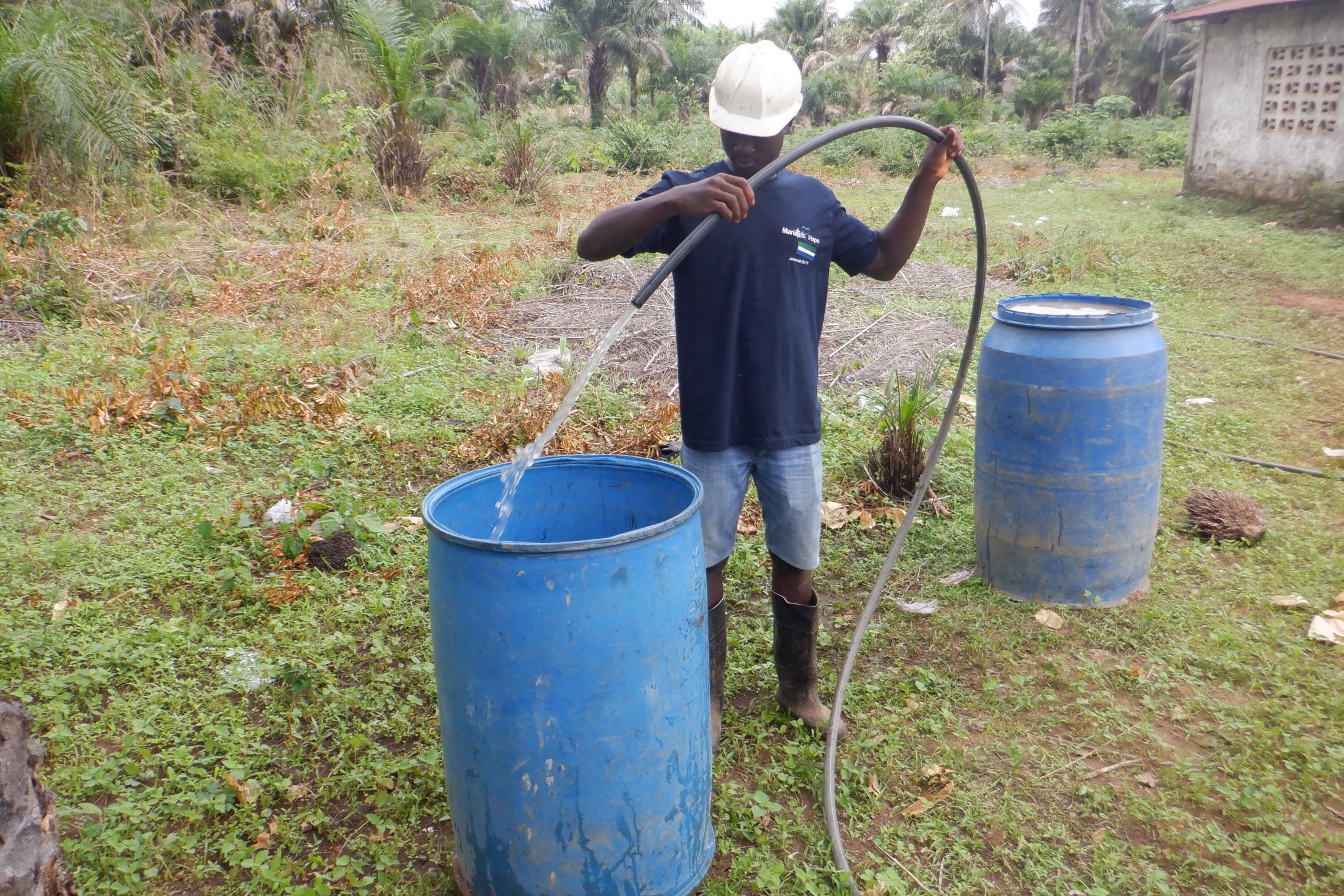The 351 students and staff of the Nelson Mandela Secondary School struggle to access sufficient water. Though they have a well on campus, it's too shallow and often runs dry. Too much time is wasted searching and waiting for water, threatening their potential.

We installed a well on the school grounds in 2020. However, the depth we were able to drill at the time was not deep enough for the water to recharge as it should during the drier parts of the year, which are becoming more intense with climate change.
"The well in the school is seasonal. When we initially drilled this well, it was the second attempt. [In] the first drill, we hit a rock and had to move the site. We moved to the present location, where the water yield was much better. Unfortunately, with the water table dropping, it proved not to be a sustainable well, as it is now considered a seasonal well. It mainly [is] dry from March to May. We have conducted a hydrogeological survey at the school and believe we have found a more sustainable location for a new borehole to alleviate the water crisis at this school," added Field Officer Julius Sesay.
When the well on the school's campus runs dry, the student's other option is to collect water from the Maternal Child Health Post (MCHP) (seen below); however, that well presents its own problems. Julius said, "The alternate water source is seasonal. The water from the well reduces in quantity during April. The well is not protected as it is not properly fenced. People and animals can easily have their way in and pollute the water."

The children are often sent to find water and are forced to sacrifice crucial classroom time waiting for water. This is a heavy burden that has detrimental effects on their futures.
"The water situation affects me, especially during the dry season. The well gets dry during the second term and third term. In this period, I find it hard to fetch water for our class. I go to the MCHP. Fetching water from this source is difficult, considering the walking distance and the waiting time. This makes me not to fetch water on time. There are times when the well would be closed. This is not easy for me," shared 15-year-old Abdulrahman S., pictured below.

Teachers feel pressured to provide a good education for their students, but everything depends on accessible water. They are forced to reduce the syllabus coverage, but the national exam schedule remains the same regardless, so students are set up for failure. All because of the school's water crisis.
38-year-old teacher Alie Kamara, seen in the classroom below, said, "It is tough to use the sanitation facilities at the school when the school water well gets dry. The little water fetched from the alternate water is not enough to serve the whole school throughout the day. It is also hard for me to do my job effectively when there is little or no water at the school. Most students will deliberately leave classes to go in search of water."

"This will not only affect the students; it will hinder me since I will not be able to pass on knowledge to the majority. As a teacher, I want them to acquire a good education as they are future leaders. But this can [only] be possible when they have the readiness to do so and when water is always available in the school. I will see it as a blessing if the school water well is available throughout the year," he continued.

Installing a new well that will provide water access year-round will enable students like Abdulrahman to no longer worry about water and instead focus on getting an education. Teachers like Alie can be confident in their students' education quality, unencumbered by the hardships a lack of water provides.
The Proposed Solution, Determined Together...
At The Water Project, everyone has a part in conversations and solutions. We operate in transparency, believing it benefits everyone. We expect reliability from one another as well as our water solutions. Everyone involved makes this possible through hard work and dedication.
In a joint discovery process, community members determine their most advantageous water solution alongside our technical experts. Read more specifics about this solution on the What We're Building tab of this project page. Then, community members lend their support by collecting needed construction materials (sometimes for months ahead of time!), providing labor alongside our artisans, sheltering and feeding the builders, and supplying additional resources.
Water Access for Everyone
This water project is one piece in a large puzzle. In Kenya, Sierra Leone, and Uganda, we're working toward complete coverage of reliable, maintained water sources that guarantee public access now and in the future within a 30-minute round trip for each community, household, school, and health center. One day, we hope to report that this has been achieved!
Training on Health, Hygiene & More
With the community's input, we've identified topics where training will increase positive health outcomes at personal, household, and community levels. We'll coordinate with them to find the best training date. Some examples of what we train communities on are:
- Improved hygiene, health, and sanitation habits
- Safe water handling, storage & treatment
- Disease prevention and proper handwashing
- Income-generation
- Community leadership, governance, & election of a water committee
- Operation and maintenance of the water point

 Borehole Well and Hand Pump
Borehole Well and Hand Pump
 Rehabilitation Project
Rehabilitation Project
























